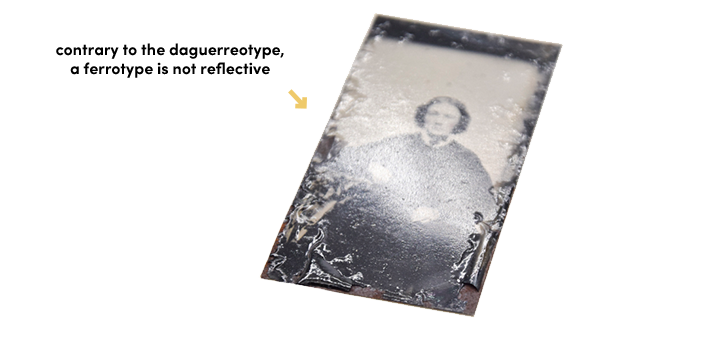Ferrotype
This is a ferrotype, also known as a tintype or melainotype. From the 1850s, photographs were captured on a thin tin plate covered with black or chocolate-brown paint. The most common size was approximately 12.7 x 17.8 cm (5 x 7 inches). Ferrotypes sometimes came in a simple paper sleeve or frame, but only occasionally. Unlike daguerreotypes (an image on a silver-plated copper sheet), ferrotypes are not reflective.
Many ferrotypes were made by photographers in outdoor locations, with a mobile photo studio – which was often nothing more than a dogcart with a darkroom in a rucksack!





